Christmas Box Office: Unbroken, The Imitation Game, Big Eyes, Into the Woods, The Gambler
And the end of a bad year in
new movies goes out with a whimper. The only one of the movies, new in theaters
yesterday, that I liked was the gay WWII hero movie. And even that was all
relative in a year of really shabby movies. Oh, and by the way, those who claim
“patriotism” got snubbed because neither “Unbroken” nor “American Sniper” got
nominated for any awards–well, they are dead wrong. I myself did not vote for
either of these in any category, as a member of the Detroit Film Critics
Society, and–at least with regard to “Unbroken”–here’s why:
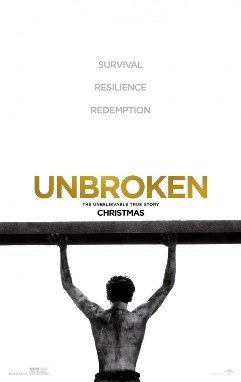

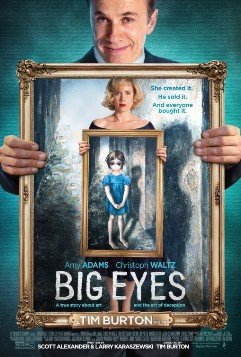
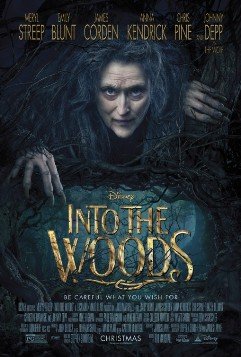
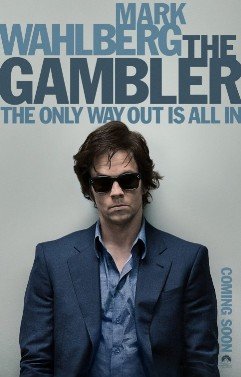
* “Unbroken“: You would think that a movie about an
American World War II hero and patriot would be right up my alley (you would be
right about that) and that I would love this movie, but you would be wrong. It
would be very difficult for any director to screw up a movie about the
inspiring, incredible life story of Louis Zamperini. But Angelina Jolie managed
to bleep it up. Gone is the amazing, uplifting story depicted in the book of the same name. In its
place, Jolie produces a long, boring, formulaic, stilted, distracting mess. I
received the DVD screener for this movie a month ago. I was excited to watch it,
but it was so slow and herky-jerky that I had to watch it in 15 minute
installments, since it didn’t keep my attention.
The most noticeable disservice to the late Zamperini is that Palestina Jolie
skips what may be the most interesting part of Zamperini’s life: his second (and
third) acts. Maybe that is because she is a godless woman who doesn’t seem to
like Christianity (or Judaism) much (but oh does she love Islam!). After he
returned home from being tortured in a Japanese prison camp during the war,
Zamperini retreated into a life of drunken carousing. But he heard Rev. Billy
Graham deliver a sermon in person, and it changed his life. He became a devout
Christian and started a camp for wayward boys, changing their lives. NONE of
that is in the movie. None. Knowing that story and watching this long, drawn
out, formulaic movie end, I thought, “Is that all there is?” I felt like I’d
watched only half a movie. The only references to his future life are a brief
line in the movie when Zamperini tells G-d he will devote his life to him if he
is allowed to survive and in a caption at the end of the movie stating that he
did devote his life to G-d. That’s it. The story is much bigger than those brief
mentions.
And then there’s what I did watch. Jolie employs the device used by the most
incompetent so-called directors. She constantly flashes back and forward and
back and forward and back again. It’s dizzying, confusing, and just flat-out
annoying. It wasn’t necessary and ruins the movie. The most interesting parts of
Zamperini’s life are obfuscated and/or poorly told. Zamperini, after being
a bad kid, is convinced by his older brother to become
a disciplined runner and track star. When he makes Team USA and goes to compete
at the “Hitler Olympics” in 1936, director Jolie shows some silly “We Are the
World” scene of Zamperini and a Japanese athlete nodding at each other during
the opening ceremony. She completely skips Zamperini’s meeting Hitler, because,
hey, that’s not at all a big deal, right? The whole set of Olympic scenes, by
the way, are in the endlessly distracting flashbacks.
And since she manages to make one of the potentially most interesting scenes
into a bore, she then also makes what should have been one of the most boring
things into something interesting, in a survival adventure movie kind of way
that reminded me of Tom Hanks in “Castaway” or Robert Redford in “All is Lost” (read my review) or the Indian kid in
“Life of Pi” (read my review). Zamperini and two
other soldiers are shown adrift on
two rafts in the middle of the sea for 45 days, struggling to survive. Compared
to the lengthy scenes of Zamperini and two other
soldiers in the raft, the scenes of Zamperini in the
Japanese POW camp seem rote, like the directrix was bored. The movie was cold
and lacks spirit, exactly like the personality of its director.
Jolie said she wanted the message of the movie to be that all people suffer in war, and
she shows us scenes of the bombings of Hiroshima and Nagasaki. We are morally
equivalent to the enemy. I get
that’s the message. How sad that she doesn’t seem to
get that it’s just not true. And if she feels that way, she should go live
amidst the enemy and stop making bad movies.
Some people have pointed out that Zamperini was taken with Jolie. Well, so
what? A 90-something old man is taken with a beautiful and very famous movie
star? He wouldn’t be the first to be starstruck and happy just to have her make
a movie about his life, no matter how boring and uncomprehensive the movie is.
The only touching part of Jolie’s film is the part that she had no part in
directing: real-life footage of Zamperini running with the Olympic torch down
the streets of Japan.
A couple of weeks ago, in the endless hype for this, Tom Brokaw hosted an
hour special on NBC about the life of Zamperini, Palestina Jolie, and the making
of this movie. The parts about Zamperini combined were far more touching and
infinitely more interesting than this multi-million dollar heap of film.
Like I said, it would be very hard to bleep up the Zamperini story as told in
the book, “Unbroken.” But in the movie of the same
name, Angie Voight managed to do just that. She says it’s an anti-war movie. And
I believe her.
ONE REAGAN


* “The Imitation Game“: While this is, among other
things, a gay rights movie clothed in World War II intrigue and mystique, the
people who made this know how to make a movie. It’s one of this year’s best. As
a conservative, I don’t believe in special rights for gays, but I do believe
that what you do in your bedroom is your business (so long as it’s not with
kids, incompetents, or animals),
and I oppose any form of persecution like the awful kind that is on display at
the end of this film.
That said, this is a pretty decent movie, one of this year’s best, in a very
bad field of them. And it’s the story of thinking outside the box (though the
use of that phrase is now inside the box) and genius. It’s the story of those
who think differently not letting the mainstream horde of sheep get them down or
cause them to change. And more
than all of these, it’s the story of a brilliant British man, Alan Turing
(Benedict Cumberbatch), who broke the Nazi Enigma code and helped end World War
II early, saving countless lives. He also invented the first computer.
This movie also employs flashbacks to Turing’s childhood as an odd duck who
is endlessly mocked by classmates, has only one friend, and so on. You get the
point. But unlike in Angelina Jolie’s “Unbroken,” the flashbacks are few and far
between, and they are employed to make a point. Despite being a persecuted kid
on the outs with others, he didn’t let that stop his different way of thinking
or get him down. He persevered and thought great things, did great things.
He is chosen for a position on a squad of code breakers attempting to
decipher the Nazi code to pilots and others. The code changes every 24 hours, so
if it’s not solved by the end of the day, they have to start all over again. It’s frustrating work, and
they aren’t making progress, until Turing convinces Winston Churchill to make
him the director of the project, and he fires those who persecuted and attacked
him. Turing creates a computer of sorts to break the code, but the computer isn’t making much progress. Soon, though, he
hires people who solved a crossword puzzle he put in the newspaper. One of these
is Keira Knightley, who inadvertently helps him figure it out.
She also becomes his girlfriend and fiancee until he tells her he is gay and
that they can’t be married. This was back in the day when homosexual acts were
against the law. Ultimately, none
of his World War II heroics or genius matters. And it’s, in the end, a sad film
because of the deplorable way Turing was treated.
Still, it’s an important movie about a lesser-known man who helped the West
against the forces of evil and was a computer science pioneer. And it’s a great
portrayal of the importance of rugged individualism and independent, critical
thought–all of which Turing embodies in this movie.
Usually, science and math geniuses aren’t sexy enough for Hollywood, and so
their stories aren’t told on the silver screen. I’m glad this was one of the
exceptions to that rule.
THREE-AND-A-HALF REAGANS







* “Big Eyes“: I always dislike reviewing movies about
real-life people, as told from the point of view of only one of those people.
You never know if the story is true. And this one is very heavy-handed, very
over the top. Walter Keane, the villain in this movie, isn’t alive to defend
himself. And the movie is told from the point of view of his ex-wife, Margaret
Keane. The movie isn’t just heavy-handed. It’s heavy-handed feminism and it’s
also anachronistic because even if everything that happens in this movie
actually happened in real life, none of it would happen today.
The story: Margaret Keane (Amy Adams) is an artist and single mother. She
paints portraits featuring big eyes (think “Bratz” dolls). You’ve probably seen
her work, which became popular in the ’60s and ’70s. My late maternal
grandmother had a “big eyes” painting, probably a knock-off or lithograph of
Keane’s work, hanging in her basement. (I used to think it was soooo ugly and
creepy-looking.) Keane meets another artist (or at least a man who pretends to
be an artist) and eventually marries him. The man, Walter Keane, soon begins
marketing and selling his new wife’s paintings as his own. And after being
initially upset, she goes along with it. Walter turns the paintings into a huge
marketing hit. They are soon everywhere, and the Keanes are making a mint. But
Margaret is upset that she doesn’t get credit for her work and that her husband
is abusive and constantly degrades her, plus he’s apparently an alcoholic.
Ultimately, she leaves him and fights back with a vengeance (and this movie,
told as she sees it). Gloria Steinem and the ghost of Betty Friedan are
proud.
But is the story really true? Mainstream liberal media accounts discuss the
lawsuit depicted in the movie, so that seems accurate, as does Margaret’s claim
that she, not her husband, painted the pics. Still, I saw nothing confirming
that Walter Keane was a violent, abusive, harmful person, threatening and
attempting to burn Mrs. Keane and her daughter and their house down. Like I
said, I hate reviewing these movies that seem over the top in depicting what
may (or may not) have occurred in real life.
I don’t want to give away the whole movie, but you get the point. I wonder
about the casting of Christoph Waltz as the Nebraska-born and American-raised
Walter Keane. Waltz’s Austrian accent comes through crystal clear, and that is
never explained in the movie, despite the fact that much of the movie takes
place just a decade or two after World War II. It’s curious.
Like I said, the real Walter Keane is long dead and not around to give his
side of the story, which–in past press accounts quoting him–was quite different
than what you see here. So, if you go see this agenda-laden, ax-grinding movie,
keep in mind that it’s propaganda neatly wrapped in Hollywood’s “You go girl!”
grrrl-power-narrative bow.
And you’ll never know the whole story. Or the real one.
* “Into the Woods“: While the “first act” of this movie
is entertaining and engrossing, the second act is an anti-male bore. Copied from
a Broadway musical of the same name, the movie takes several fairy tales–“Little
Red Riding Hood,” “Cinderella,” “Jack and the Beanstalk,” etc.–and intertwines
them, with the characters involving themselves in each other’s stories. Johnny
Depp’s child-molester-like wolf in the “Little Red Riding Hood” story was just
more than a little creepy, but I enjoyed the first half of the movie.
It’s all male characters, especially the princes (including the one
Cinderella marries), are idiots, fools, and failures, fending off a female giant
in the woods, that I got bored and turned off. That part was boring and typical
Hollywood crap. And if you don’t like musicals (I do like them), you’ll hate
this.
Oh, by the way, Meryl Streep is pretty true to character as a witch. She’s
played one several times, and I get the feeling this ain’t just acting.
* “The Gambler“: Mainstream (liberal) movie critics are
falling all over this movie in gushing unison. Not me. I don’t know what the
point of this slow, boring, pathetic movie was . . . other than to give Mark
Wahlberg yet another paycheck and pretend he’s a great arthouse, indie film
actor. This is supposedly a remake of the 1974 James Caan star vehicle of the
same name.
The story: Wahlberg is a college professor from a very rich family. But he
keeps losing everything because he’s addicted to gambling. And even when his
wealthy mother and loan sharks give him the money to pay off his gambling
debts–and even when he’s hundreds of thousands of dollars ahead at the casino
tables–he deliberately keeps making risky bets and gambles it all away.
Therefore, a whole bunch of mobster and loan shark thug types are after him.
Oh, I forgot one other reason they musta made this movie: so they could show
you a digustingly morbidly obese John Goodman wearing nearly no clothes in a
schvitz joint, playing a pseudo-Jewish loan shark, who uses the word “schvartze”
(Yiddish word for Black, usually derogatory). We are just 5.2 million people
(and shrinking) in America. And they couldn’t resist yet another opportunity to
implicate Jews as ugly, fat, racist cretins in a movie. Thanks, Hollywood.
THREE MARXES PLUS THREE OBAMAS










The Interview: Juvenile Crap w/ Some Funny Lines
By Debbie
Schlussel
Reader I Am Me warned me it was bad. “It’s AWFUL. It may be the worst movie I have ever seen,” he wrote me. He paid to watch the controversial “The Interview” online, “out of some probably misplaced sense of patriotism.” I went to a theater to see it, last night.
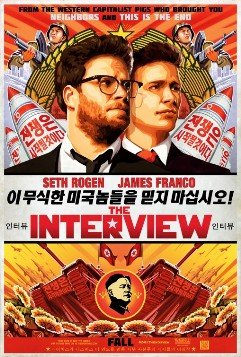
It’s not a great movie. In fact, I agree with him that it’s somewhat crappy, although I’ve seen many far worse movies just this year, and I didn’t hate it as much as he did. It’s a low-rent movie with a lot of silliness and juvenile, crass, gross humor–the kind that appeals to teens and 20-somethings raised on a steady diet of MTV’s “Teen Moms” and assorted Kardashian Kartrashian. I’m surprised it actually cost $40 million to make because it looks more like a $4 million (or less) budget movie.
But I thought it was very funny. I will be the first to admit that I went to the movie ready to laugh, and that makes a huge difference. I laughed a lot, especially during the first third or half of the movie, probably more than anyone else in the theater where I saw it.
But the movie isn’t just a crude, low-humor vehicle for Seth Rogen and James Franco. It made a lot of good points about the low taste of America, these days. Rogen plays a serious journalist stuck producing Franco’s celebrity-culture interview show. Rogen longs to do serious stuff and be taken seriously by his colleagues at other journalism outlets. But Franco argues with him that Americans want this kind of low-brow celebrity culture. He says that the American TV-viewing public is constantly saying, “Gimme s–t, gimme s–t!” To me, that’s spot on. If it weren’t, TMZ wouldn’t have soared to become THE influential “news” source in America in just a few years. And if it weren’t true, the Kardashians would be working minimum wage jobs sweeping up hair at a salon, instead of multi-million dollar annual earners, famous for being famous.
The movie makes the point repeatedly about the dumbing down of America’s taste and description of what is journalism and news. And that’s on-target. But after that, it’s downhill. And while it makes other journalists seem more serious than the celebrity “journalists,” that simply isn’t the case anymore and hasn’t been for a long time. All three of the major network nightly news broadcasts are more than peppered with celebrity news, whether it was about Joan Rivers’ death or Bill Cosby’s alleged multiple rapes or NBC News Anchor Brian Williams’ daughter Allison’s starring role in NBC News’ live braodcast of “Peter Pan.” And “60 Minutes”–which is portrayed in the movie as a serious news program–constantly does celebrity profiles and interviews. Just last Sunday, Reese “I Am an American Citizen! [so don’t arrest me for drunk driving]” Witherspoon was profiled and interviewed on “60 Minutes.” And you know what they deliberately didn’t mention in the puff piece? Her drunk driving arrest and outrageous behavior on video. It’s as if it never happened.
Back to “The Interview.” As you probably know, the plot centers on a celebrity-obsessed interview show and its host (played by Franco) and its producer (played by Rogen). As I mentioned, Rogen wants to be taken seriously (which makes you wonder why he agreed to produce a celebrity show with a semi-dim-witted host), and the host wants to make news. Franco reads that North Korean dictator Kim Jong-Un is a fan of his show, and he convinces Rogen to make contact with North Korea to request an interview. Once the interview is on, serious journalists are all angry, afraid that Franco is being played for a patsy (which he essentially is) by Kim. And the CIA manages to convince the duo to assassinate Kim. But when the two of them get to North Korea, Franco buys into the propaganda and is “honeypotted” (I won’t use the phrase here that they actually use in the movie) into liking Kim, and it’s up in the air whether a hard-hitting interview and the assassination will actually happen.
Amidst all the controversy about this movie, I heard many (liberal) commentators whine that Rogen and Franco and Sony shouldn’t have made a movie about killing an actual sitting world leader (which is funny because all of them were dead silent when a movie about killing President Bush, “Death of a President,” was released while he was President–read my review). I thought this movie actually humanized Kim and undersold what a madman and mass-murdering human-rights abuser he is. There were no shots of concentration camps or starving people. No scenes of citizens murdered en masse. None of that. And you have to wonder, “Is this all there is? Is this nothing of a movie really what North Korea was upset about?”
While Sony may still lose a lot of money after initially canceling the movie’s release, North Korea’s strategy over a really stupid movie was even more stupid. Had they done nothing and not released hacked messages (at least until after “The Interview” was long gone from theaters), this movie would have quickly bombed and died a quick death, unnoticed by most. It’s not a good movie, and it would have failed against relatively better Christmas-time fare. But North Korean hackers and terrorist-threat-issuers created controversy and publicity for the movie that made people want to go see it or pay to see it online. North Korea created a demand for crap–crap that isn’t really that negative against North Korea as much as it is negative against America and Americans.
Watching this movie, I didn’t even think it was original, as some claim it is. It reminded me of real-life boob Dennis Rodman traveling to hang out with Kim and singing his praises to all who would give him a forum. And it reminded me of assorted cold war movies in which we Americans are the idiots versus clever Communist dictators, such as “Spies Like Us.” And it has notes from Michael Moore’s totally unwatchable, failed attempt at a fiction movie (though all his documentaries do qualify as fiction movies), “Canadian Bacon.” Both of those movies stank, and this stinker is a doubly smelly derivative of those. There is nothing new under the sun, except for North Korea’s help in making this a questionable “must-see” movie for the masses by making it forbidden fruit. North Korean hackers turned this unworthy target into the most talked about movie of the year.
There’s nothing patriotic about this movie in which Americans are dummies (though, sadly, we often are in real life, today). The bottom line is that this movie isn’t worth the hype, and definitely not worth the ten bucks-plus and two hours of your life you’ll never get back.
Says reader I Am Me, “Not only did the movie stink, but I am now fearing the North Koreans may hack the database containing my credit card information.”
He gave me yet another reason to see it at a movie theater. And to pay for my ticket in cash.
TWO OBAMAS PLUS THREE DENNIS RODMANS
Reader I Am Me warned me it was bad. “It’s AWFUL. It may be the worst movie I have ever seen,” he wrote me. He paid to watch the controversial “The Interview” online, “out of some probably misplaced sense of patriotism.” I went to a theater to see it, last night.

It’s not a great movie. In fact, I agree with him that it’s somewhat crappy, although I’ve seen many far worse movies just this year, and I didn’t hate it as much as he did. It’s a low-rent movie with a lot of silliness and juvenile, crass, gross humor–the kind that appeals to teens and 20-somethings raised on a steady diet of MTV’s “Teen Moms” and assorted Kardashian Kartrashian. I’m surprised it actually cost $40 million to make because it looks more like a $4 million (or less) budget movie.
But I thought it was very funny. I will be the first to admit that I went to the movie ready to laugh, and that makes a huge difference. I laughed a lot, especially during the first third or half of the movie, probably more than anyone else in the theater where I saw it.
But the movie isn’t just a crude, low-humor vehicle for Seth Rogen and James Franco. It made a lot of good points about the low taste of America, these days. Rogen plays a serious journalist stuck producing Franco’s celebrity-culture interview show. Rogen longs to do serious stuff and be taken seriously by his colleagues at other journalism outlets. But Franco argues with him that Americans want this kind of low-brow celebrity culture. He says that the American TV-viewing public is constantly saying, “Gimme s–t, gimme s–t!” To me, that’s spot on. If it weren’t, TMZ wouldn’t have soared to become THE influential “news” source in America in just a few years. And if it weren’t true, the Kardashians would be working minimum wage jobs sweeping up hair at a salon, instead of multi-million dollar annual earners, famous for being famous.
The movie makes the point repeatedly about the dumbing down of America’s taste and description of what is journalism and news. And that’s on-target. But after that, it’s downhill. And while it makes other journalists seem more serious than the celebrity “journalists,” that simply isn’t the case anymore and hasn’t been for a long time. All three of the major network nightly news broadcasts are more than peppered with celebrity news, whether it was about Joan Rivers’ death or Bill Cosby’s alleged multiple rapes or NBC News Anchor Brian Williams’ daughter Allison’s starring role in NBC News’ live braodcast of “Peter Pan.” And “60 Minutes”–which is portrayed in the movie as a serious news program–constantly does celebrity profiles and interviews. Just last Sunday, Reese “I Am an American Citizen! [so don’t arrest me for drunk driving]” Witherspoon was profiled and interviewed on “60 Minutes.” And you know what they deliberately didn’t mention in the puff piece? Her drunk driving arrest and outrageous behavior on video. It’s as if it never happened.
Back to “The Interview.” As you probably know, the plot centers on a celebrity-obsessed interview show and its host (played by Franco) and its producer (played by Rogen). As I mentioned, Rogen wants to be taken seriously (which makes you wonder why he agreed to produce a celebrity show with a semi-dim-witted host), and the host wants to make news. Franco reads that North Korean dictator Kim Jong-Un is a fan of his show, and he convinces Rogen to make contact with North Korea to request an interview. Once the interview is on, serious journalists are all angry, afraid that Franco is being played for a patsy (which he essentially is) by Kim. And the CIA manages to convince the duo to assassinate Kim. But when the two of them get to North Korea, Franco buys into the propaganda and is “honeypotted” (I won’t use the phrase here that they actually use in the movie) into liking Kim, and it’s up in the air whether a hard-hitting interview and the assassination will actually happen.
Amidst all the controversy about this movie, I heard many (liberal) commentators whine that Rogen and Franco and Sony shouldn’t have made a movie about killing an actual sitting world leader (which is funny because all of them were dead silent when a movie about killing President Bush, “Death of a President,” was released while he was President–read my review). I thought this movie actually humanized Kim and undersold what a madman and mass-murdering human-rights abuser he is. There were no shots of concentration camps or starving people. No scenes of citizens murdered en masse. None of that. And you have to wonder, “Is this all there is? Is this nothing of a movie really what North Korea was upset about?”
While Sony may still lose a lot of money after initially canceling the movie’s release, North Korea’s strategy over a really stupid movie was even more stupid. Had they done nothing and not released hacked messages (at least until after “The Interview” was long gone from theaters), this movie would have quickly bombed and died a quick death, unnoticed by most. It’s not a good movie, and it would have failed against relatively better Christmas-time fare. But North Korean hackers and terrorist-threat-issuers created controversy and publicity for the movie that made people want to go see it or pay to see it online. North Korea created a demand for crap–crap that isn’t really that negative against North Korea as much as it is negative against America and Americans.
Watching this movie, I didn’t even think it was original, as some claim it is. It reminded me of real-life boob Dennis Rodman traveling to hang out with Kim and singing his praises to all who would give him a forum. And it reminded me of assorted cold war movies in which we Americans are the idiots versus clever Communist dictators, such as “Spies Like Us.” And it has notes from Michael Moore’s totally unwatchable, failed attempt at a fiction movie (though all his documentaries do qualify as fiction movies), “Canadian Bacon.” Both of those movies stank, and this stinker is a doubly smelly derivative of those. There is nothing new under the sun, except for North Korea’s help in making this a questionable “must-see” movie for the masses by making it forbidden fruit. North Korean hackers turned this unworthy target into the most talked about movie of the year.
There’s nothing patriotic about this movie in which Americans are dummies (though, sadly, we often are in real life, today). The bottom line is that this movie isn’t worth the hype, and definitely not worth the ten bucks-plus and two hours of your life you’ll never get back.
Says reader I Am Me, “Not only did the movie stink, but I am now fearing the North Koreans may hack the database containing my credit card information.”
He gave me yet another reason to see it at a movie theater. And to pay for my ticket in cash.
TWO OBAMAS PLUS THREE DENNIS RODMANS





No comments:
Post a Comment